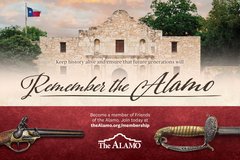In addition to the sloping of the curb in front of the Church, UTSA-CAR monitored the removal of soils associated with the redesign meant to avoid impacting a feature previously uncovered near the south gate/south wall of the compound. The feature was originally discovered over the summer and consisted of an area of compacted soils that could be related to the entry gate into the Alamo during the mission fort periods. In an effort to preserve the feature for later investigation, the location of bollards were adjusted.
The new location placed the bollards further to the east, on an area that has been built up since the early 1990s. During the excavations, archaeologists documented that there was sand to the depth of the bollard impact. No additional excavations were conducted to determine how deep the sand extended. No artifacts were noted during the excavations in the sand.
Raba Kistner focused on excavations within and outside of the Church. Currently, three units are being excavated within the Church, while one is located along the exterior of the south wall of the Church. The interior units appear to have encountered a uniform layer of soil that contains limestone rocks, mortar, gravels, ceramics, glass fragments, and metal.
The unit located inside the room referred to as the Monk’s Burial Room has encountered an interesting feature. At approximately 24 inches below datum, the archaeologists began encountering signs of a compacted surface. As they were uncovering the compacted layer, holes of varying sizes that cut through the compacted surface were discovered. The archaeologists left the compacted surface in place while excavating the soil from the various holes. The matrix removed from the holes contained the same type of soils and materials that were present above the compacted surface.




